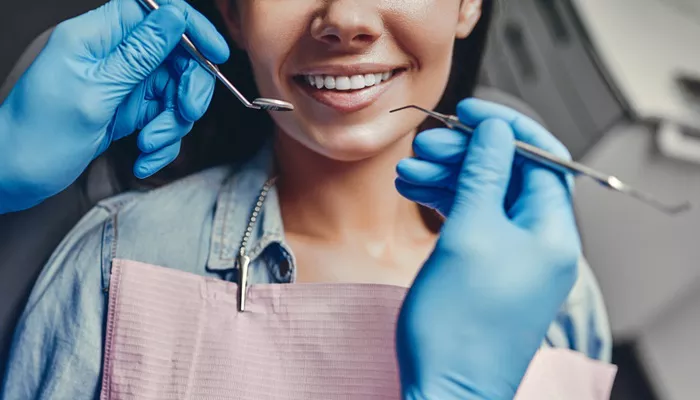Tooth fillings are a common dental procedure used to restore teeth that have been damaged by decay or trauma. They help to protect the tooth from further decay, restore its function, and improve its appearance. However, like any dental restoration, fillings can sometimes fall out. This can be alarming and may lead to further dental issues if not addressed promptly.
In this article, we will explore the reasons why fillings might fall out, the immediate steps you should take if this happens, and how to prevent it from occurring in the future. Understanding these aspects will help you maintain your dental health and address any issues effectively.
Why Do Fillings Fall Out?
Fillings can fall out for several reasons, including:
Age of the Filling: Over time, fillings can wear down due to regular chewing and exposure to various foods. Composite fillings typically last between 5 to 15 years, while amalgam fillings can last up to 25 years.
Decay: If new cavities develop around the filling or underneath it, this can weaken the bond and cause the filling to loosen or fall out.
Trauma: Physical trauma to the mouth, such as biting down on hard objects or experiencing an injury, can dislodge a filling.
Bruxism: Grinding or clenching teeth puts excessive pressure on fillings, increasing the likelihood of them becoming loose.
Poor Bonding: If a filling was not properly bonded during placement, it may not adhere well to the tooth structure and could fall out prematurely.
Immediate Steps to Take When A Filling Falls Out
If you find yourself in a situation where a filling has fallen out, follow these steps:
1. Contact Your Dentist Immediately
The first step is to call your dentist as soon as possible. Explain your situation and schedule an appointment. Prompt attention is crucial because leaving a tooth unprotected can lead to further decay and complications.
2. Keep the Filling (If Possible)
If the filling has fallen out but is intact, keep it safe. Your dentist may be able to reuse it if it is clean and undamaged.
3. Maintain Oral Hygiene
To prevent infection or further damage:
Rinse with Salt Water: Mix half a teaspoon of salt in a cup of warm water and use it as a mouth rinse. This helps keep the area clean and reduces bacteria.
Brush Gently: Continue brushing your teeth but be gentle around the affected area to avoid irritation.
4. Avoid Certain Foods
Steer clear of hard, crunchy, or sticky foods that could aggravate the exposed tooth or cause pain. Eating soft foods will minimize discomfort while you wait for your appointment.
5. Manage Pain
If you experience pain or sensitivity:
Take over-the-counter pain relief medications like ibuprofen or acetaminophen.
Apply a cold compress on the outside of your cheek near the affected area for 15 minutes at a time to reduce swelling.
6. Use Temporary Solutions
You can use dental wax or temporary filling material available at pharmacies to cover the exposed area until you see your dentist. This is not a permanent solution but can help protect the tooth temporarily.
What Happens at Your Dental Appointment?
When you visit your dentist after losing a filling, they will conduct an examination to determine:
The reason for the filling’s failure.
The condition of the remaining tooth structure.
The best course of action for repair.
Treatment Options
Depending on the assessment, treatment may include:
Replacing the Filling: If the original filling is intact and there is no significant decay present, your dentist may simply replace it.
Crown Placement: If substantial damage has occurred to the tooth structure, a crown may be recommended for added protection and strength.
Root Canal Treatment: In cases where decay has reached deeper layers of the tooth, root canal therapy might be necessary before placing a new filling or crown.
Preventing Fillings from Falling Out
While some factors are beyond your control (like age), there are several proactive measures you can take to minimize the risk of losing fillings:
1. Practice Good Oral Hygiene
Maintaining excellent oral hygiene is essential:
Brush twice daily with fluoride toothpaste.
Floss daily to remove plaque and food particles from between teeth.
Use an antibacterial mouthwash if recommended by your dentist.
2. Regular Dental Checkups
Schedule routine dental checkups every six months. Regular professional cleanings allow your dentist to monitor existing fillings and identify potential problems early on.
3. Be Mindful of Your Diet
Avoid excessive consumption of hard candies, ice, and other hard foods that can put stress on fillings. Also, limit sugary snacks that contribute to tooth decay.
4. Address Teeth Grinding
If you grind your teeth (bruxism), consult with your dentist about protective measures such as custom mouthguards or stress management techniques.
5. Avoid Using Teeth as Tools
Never use your teeth to open packages or bottles; this puts unnecessary strain on fillings.
Conclusion
Experiencing a lost filling can be concerning, but understanding how to respond effectively can help mitigate potential damage to your tooth. Always prioritize contacting your dentist promptly for evaluation and treatment options. By practicing good oral hygiene and taking preventive measures, you can significantly reduce the risk of fillings falling out in the future.
Related topics:

